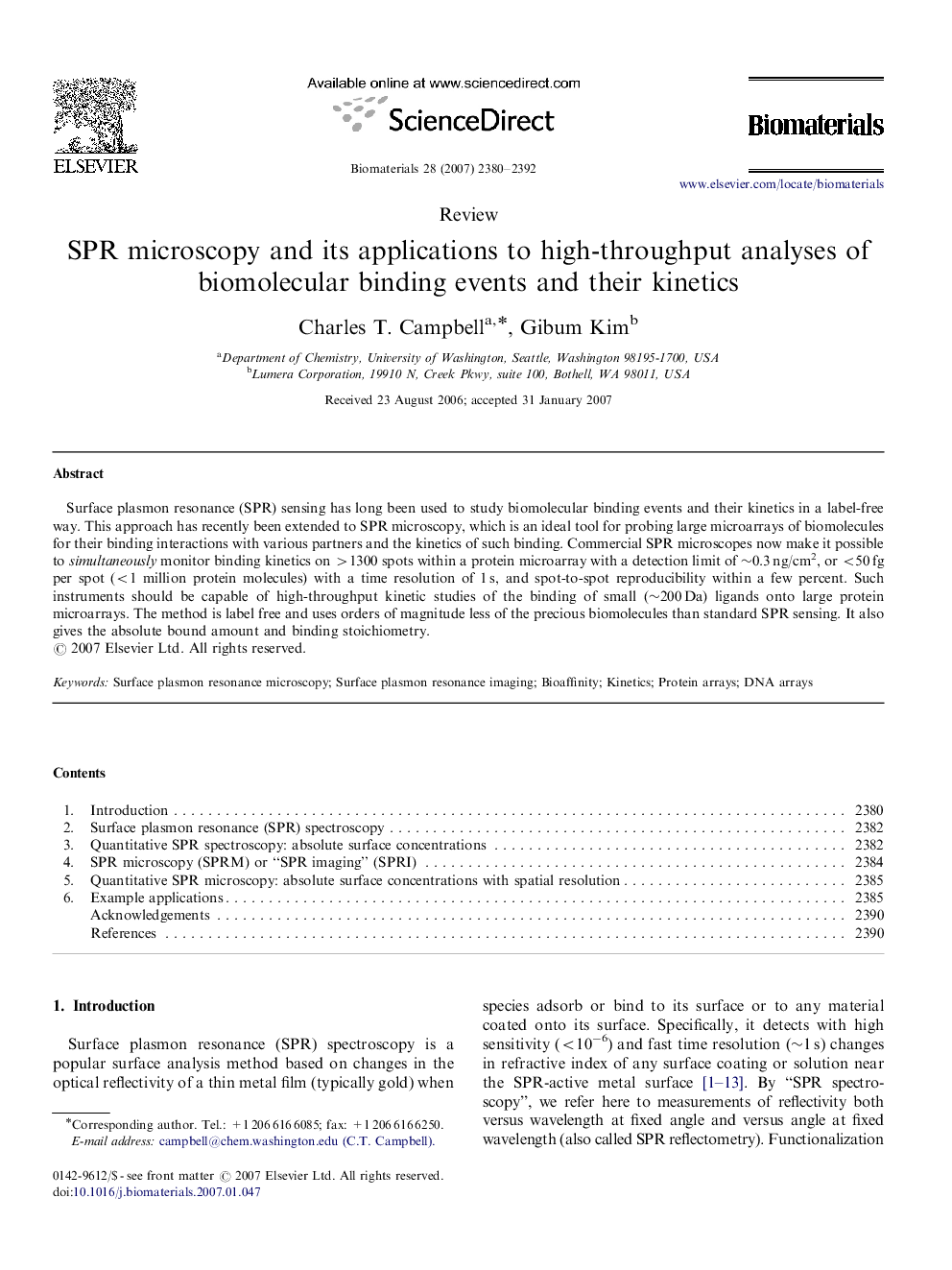| Article ID | Journal | Published Year | Pages | File Type |
|---|---|---|---|---|
| 10134 | Biomaterials | 2007 | 13 Pages |
Surface plasmon resonance (SPR) sensing has long been used to study biomolecular binding events and their kinetics in a label-free way. This approach has recently been extended to SPR microscopy, which is an ideal tool for probing large microarrays of biomolecules for their binding interactions with various partners and the kinetics of such binding. Commercial SPR microscopes now make it possible to simultaneously monitor binding kinetics on >1300 spots within a protein microarray with a detection limit of ∼0.3 ng/cm2, or <50 fg per spot (<1 million protein molecules) with a time resolution of 1 s, and spot-to-spot reproducibility within a few percent. Such instruments should be capable of high-throughput kinetic studies of the binding of small (∼200 Da) ligands onto large protein microarrays. The method is label free and uses orders of magnitude less of the precious biomolecules than standard SPR sensing. It also gives the absolute bound amount and binding stoichiometry.
